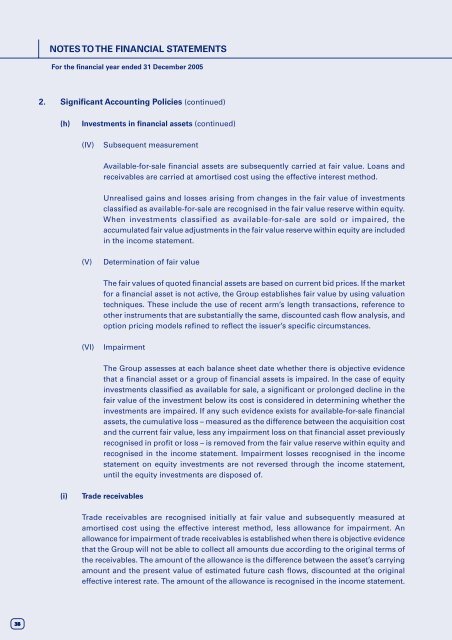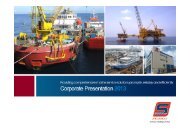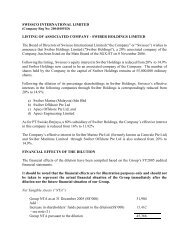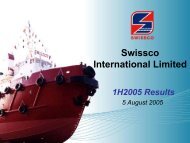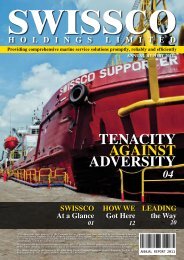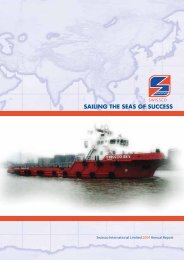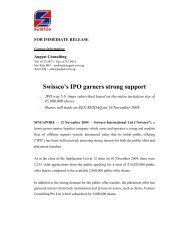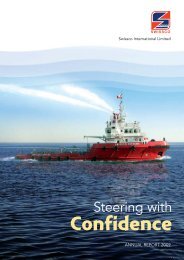Untitled - Swissco Holdings Limited
Untitled - Swissco Holdings Limited
Untitled - Swissco Holdings Limited
Create successful ePaper yourself
Turn your PDF publications into a flip-book with our unique Google optimized e-Paper software.
NOTES TO THE FINANCIAL STATEMENTS<br />
For the financial year ended 31 December 2005<br />
2. Significant Accounting Policies (continued)<br />
(h)<br />
Investments in financial assets (continued)<br />
(IV)<br />
Subsequent measurement<br />
Available-for-sale financial assets are subsequently carried at fair value. Loans and<br />
receivables are carried at amortised cost using the effective interest method.<br />
Unrealised gains and losses arising from changes in the fair value of investments<br />
classified as available-for-sale are recognised in the fair value reserve within equity.<br />
When investments classified as available-for-sale are sold or impaired, the<br />
accumulated fair value adjustments in the fair value reserve within equity are included<br />
in the income statement.<br />
(V)<br />
Determination of fair value<br />
The fair values of quoted financial assets are based on current bid prices. If the market<br />
for a financial asset is not active, the Group establishes fair value by using valuation<br />
techniques. These include the use of recent arm’s length transactions, reference to<br />
other instruments that are substantially the same, discounted cash flow analysis, and<br />
option pricing models refined to reflect the issuer’s specific circumstances.<br />
(VI)<br />
Impairment<br />
The Group assesses at each balance sheet date whether there is objective evidence<br />
that a financial asset or a group of financial assets is impaired. In the case of equity<br />
investments classified as available for sale, a significant or prolonged decline in the<br />
fair value of the investment below its cost is considered in determining whether the<br />
investments are impaired. If any such evidence exists for available-for-sale financial<br />
assets, the cumulative loss – measured as the difference between the acquisition cost<br />
and the current fair value, less any impairment loss on that financial asset previously<br />
recognised in profit or loss – is removed from the fair value reserve within equity and<br />
recognised in the income statement. Impairment losses recognised in the income<br />
statement on equity investments are not reversed through the income statement,<br />
until the equity investments are disposed of.<br />
(i)<br />
Trade receivables<br />
Trade receivables are recognised initially at fair value and subsequently measured at<br />
amortised cost using the effective interest method, less allowance for impairment. An<br />
allowance for impairment of trade receivables is established when there is objective evidence<br />
that the Group will not be able to collect all amounts due according to the original terms of<br />
the receivables. The amount of the allowance is the difference between the asset’s carrying<br />
amount and the present value of estimated future cash flows, discounted at the original<br />
effective interest rate. The amount of the allowance is recognised in the income statement.<br />
38


